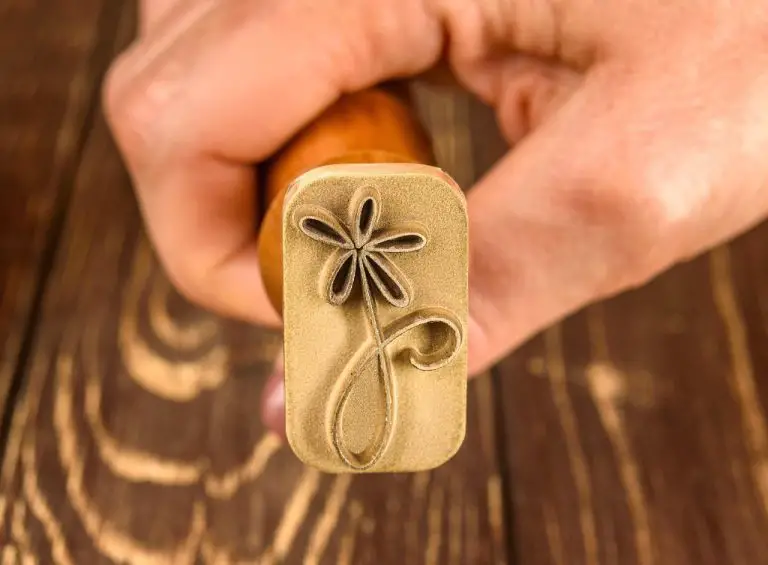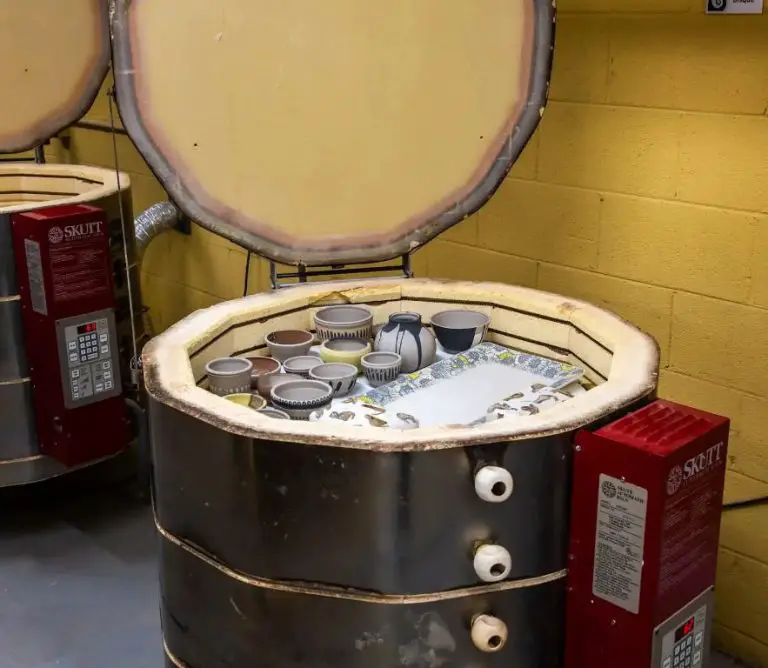Does Resin Stick To Air Dry Clay?
Resin crafts and air dry clay crafts have surged in popularity in recent years. Crafters and hobbyists have embraced these versatile mediums to create beautiful jewelry, home decor pieces, figurines, and more. The visual appeal and limitless design possibilities make resin and air dry clay a joy to work with. However, successfully combining these two materials in one project can be tricky. The biggest question crafters face is: does resin stick to air dry clay?
What is Resin?
Resin is a clear, liquid plastic that hardens into a durable, glass-like finish. The most common resins used in crafting and DIY projects are epoxy resin and polyester resin.
Resin has some unique properties that make it popular for a variety of applications:
- It cures into a solid, transparent material that can showcase embedded objects, colors, and designs.
- The cured resin surface is shiny, smooth, and glass-like.
- It is waterproof and resistant to scratches and yellowing.
- Resin can be colored, tinted, or filled with inclusions like glitter.
- It bonds well to other materials like wood, glass, and certain plastics.
- Resin cures relatively quickly, often within 24 hours.
These characteristics allow resin to be used for jewelry, tabletops, art pieces, decorative objects, and various craft projects where a clear, glossy finish is desired.
What is Air Dry Clay?
Air dry clay is a modeling material made from natural substances like clay and cellulose. It is soft and pliable when moist but hardens into a durable ceramic material as it dries through evaporation. Some key properties of air dry clay include:
- Made from natural ingredients like clay, cellulose, and water
- Does not require baking or firing to harden and cure
- Dries and hardens at room temperature through evaporation
- Can be molded, shaped, carved, etc. when soft
- Hardens into a strong, durable ceramic material
- Once cured, it provides an air dry clay sculpture, decorative object, or craft project
- Available in white and various colors
- Non-toxic and safe for most uses
Air dry clay is popular for arts and crafts projects as well as prototypes and modeling. Its versatility and air drying capability make it a handy material for creators of all ages.
Can Resin Stick to Air Dry Clay?
The short answer is yes, resin can adhere to surfaces made of air dry clay. With proper preparation and application, resin and air dry clay can be combined to create beautiful pieces of art, jewelry, and more.
While air dry clay is porous, resin can fill in those pores and create a smooth, glass-like coating. Air dry clay on its own can be delicate, but a layer of resin makes it much more durable. The finished resin surface is also waterproof, protecting air dry clay creations from damage.
However, there are some important steps to take when using resin with air dry clay. The clay must be fully cured and free of moisture before applying resin. The surface needs to be sanded and cleaned to remove any barriers to adhesion. A sealant may be necessary so the clay does not absorb the resin. As long as proper preparation, application, and curing procedures are followed, resin and air dry clay make a great pair.
Surface Preparation
Proper surface preparation is crucial for getting resin to adhere well to air dry clay. The surface needs to be clean, dry, and rough or porous enough for the resin to grip. Here are some tips for prepping air dry clay for resin:
Sand the Surface – Lightly sand the clay with fine grit sandpaper. This roughens up the surface and allows the resin to grip better. Be careful not to sand too much or you may compromise the structural integrity of the clay.
Clean Thoroughly – Use isopropyl alcohol on a clean cloth to remove any dust, oils or contaminants. Let the surface dry fully before applying resin.
Use a Sealant – Applying a sealant first can create a tacky surface for the resin to stick to. PVA glue, mod podge, or dedicated clay sealants work well.
Score or Scratch the Surface – Use a hobby knife or tool to lightly score the clay surface. This gives the resin more texture and crevices to hold onto.
Use a Primer – Primers like Zinsser Bulls Eye provide extra bite for resin adhesion. Be sure to let the primer cure fully before pouring resin.
Taking the time to correctly prep your clay surface will help ensure that the resin fully sticks and does not peel or flake off over time.
Using a Sealant
Some crafters have found that using a sealant can help resin adhere better to air dry clay surfaces. The sealant creates a barrier that resin can grab onto more easily. Most any sealant designed for arts and crafts should work, but here are some top options:
- Mod Podge – This classic multi-purpose sealer comes in matte, glossy and satin finishes. Multiple thin coats are recommended.
- Acrylic paint – A couple coats of acrylic craft paint seals the surface. Let it dry fully between coats.
- Spray sealants – Spray options like Krylon’s Seal It! give even coverage with less mess.
- Epoxy resin – Brushing a thin layer of epoxy resin before pouring fully seals the clay.
Be sure to read and follow the specific sealant directions for best results. Allow adequate drying time before pouring the resin. Testing first on scrap pieces is also advised.
Resin Curing Process
The resin curing process is how two-part epoxy resin forms durable polymer bonds as it hardens. Resin is mixed with a hardener that initiates a chemical reaction causing the resin to harden from a liquid state into a solid state. This reaction happens over time and transforms the resin into a strong, hardened plastic material.
For the resin to properly adhere to the clay surface, it needs ample time to fully cure and harden. Full cure times depend on the specific resin used but often take 24-48 hours at room temperature. During this curing process, the resin undergoes cross-linking between polymer chains which allows it to bond tightly with porous materials like clay. As it hardens, the resin seeps into micro grooves and textures on the clay’s surface, creating a strong mechanical and chemical bond.
It’s important not to disturb the resin too soon while it’s curing or else it risks compromising the bond. Once fully cured, the resin will have formed a durable, waterproof coating around the clay artwork.
Troubleshooting
When working with resin and air dry clay, there are a few common issues that may arise:
Bubbles in the Resin
Bubbles can form in the resin while mixing or pouring if you’ve introduced too much air into the mixture. Try mixing slower, pouring from closer to the surface, and using a lighter touch. You can also try a heat gun or lighter to pop bubbles after pouring.
Cracking
If the resin or clay cracks as it cures, the layers may be too thick. Try using multiple thinner layers instead of one thick pour. Making sure clay is fully cured before applying resin can also help prevent cracking.
Poor Adhesion
If resin peels or flakes off the clay, the surfaces were likely not cleaned, sanded, and sealed properly. Thoroughly preparing surfaces before pouring resin helps it adhere correctly.
Stickiness
If resin remains sticky rather than curing fully, the ratio of resin to hardener was likely off. Carefully measuring and mixing per manufacturer instructions is key for proper curing.
Example Projects
Resin and air dry clay open up endless creative possibilities when used together. Here are some inspiring projects to spark your imagination:
Geode Coasters
Make abstract looking drink coasters by pressing air dry clay into a coaster mold. Paint the molded clay with acrylic paints. Pour a thin layer of resin over the top and let cure. Once cured, pop the resin geode coasters out of the molds.
Faux Geode Bowls
Roll coils of air dry clay and arrange into the shape of a bowl. Use acrylic paints to paint the inside and outside of the clay bowl. Coat the inside of the bowl with resin, allowing it to drip down the sides. Add “crystals” made from shard glass or plastic gems. Let the resin cure fully before using the bowl.
Marbled Mugs
Make clay mugs on a pottery wheel or hand build them using clay coils. Paint the mugs with acrylic paints in marbled patterns. Coat the inside of the mugs with a layer of resin to make them liquid-proof. The resin will dry glossy and smooth.
Faux Opal Jewelry
Make pendants, rings or beads from air dry clay. Use alcohol inks to create colorful resin pieces that look like opal gemstones. Embed the resin pieces into the clay jewelry for one-of-a-kind designs.
Conclusion
In conclusion, resin can adhere successfully to air dry clay if the proper steps are taken to prepare the clay surface and ensure compatibility between the materials. Using a sealant specifically designed for clay crafting provides the best results, as it seals the porous clay surface and provides a protective barrier so the resin does not soak in or bubble. The curing process also requires care, using thin layers of resin and allowing proper dry time between coats. With some planning and testing beforehand, resin and air dry clay can be combined to create beautiful, durable pieces. Overall, resin and clay can work together through proper surface preparation, sealant use, resin application, and curing.
The key points to remember are to seal the clay, apply resin in thin layers, allow proper curing time between coats, and troubleshoot any bubbling issues. With care taken during the process, resin can adhere smoothly and clearly to an air dry clay base. The end result is a high-quality, glossy finished product that takes advantage of the best features of both materials.


